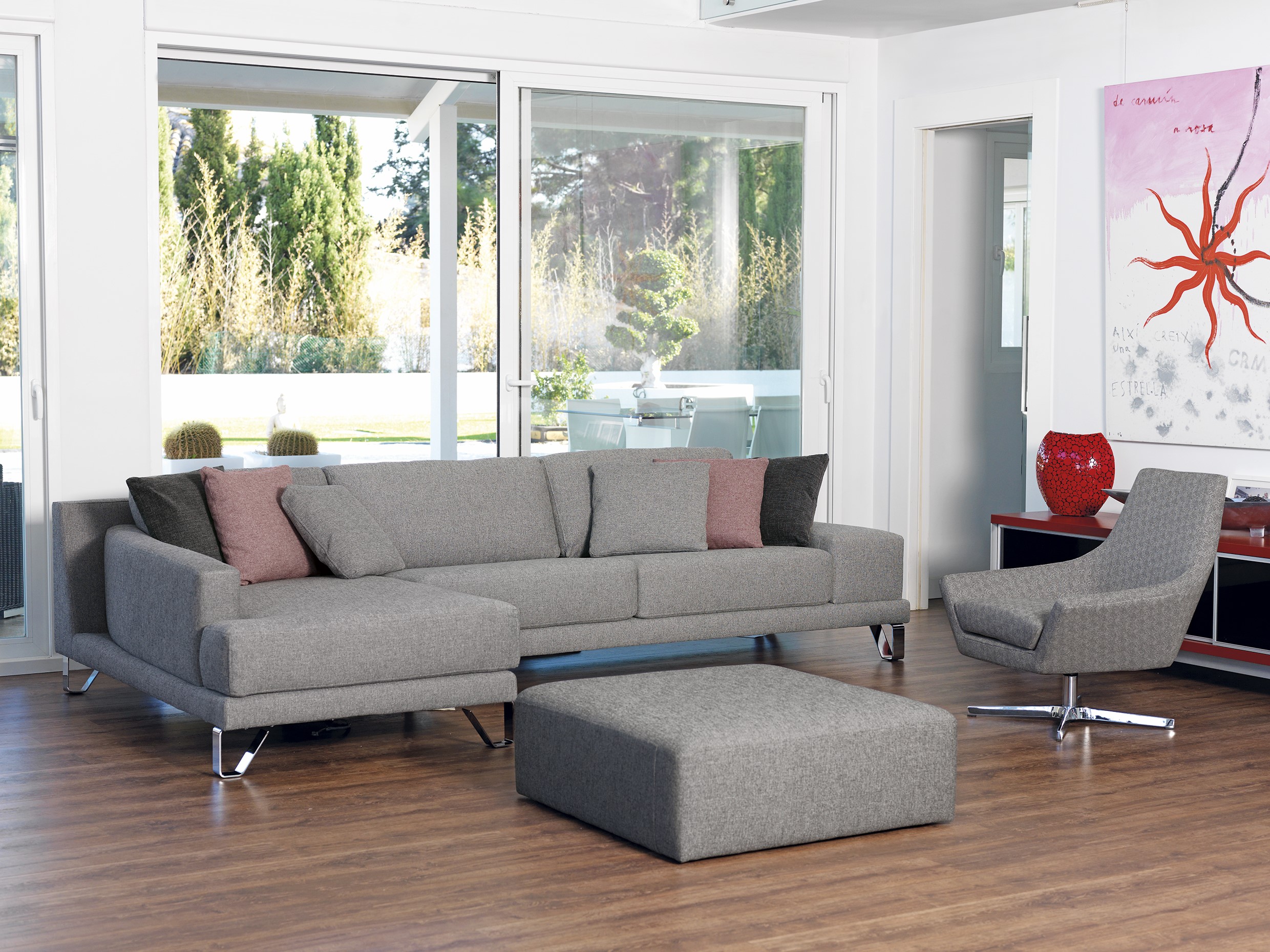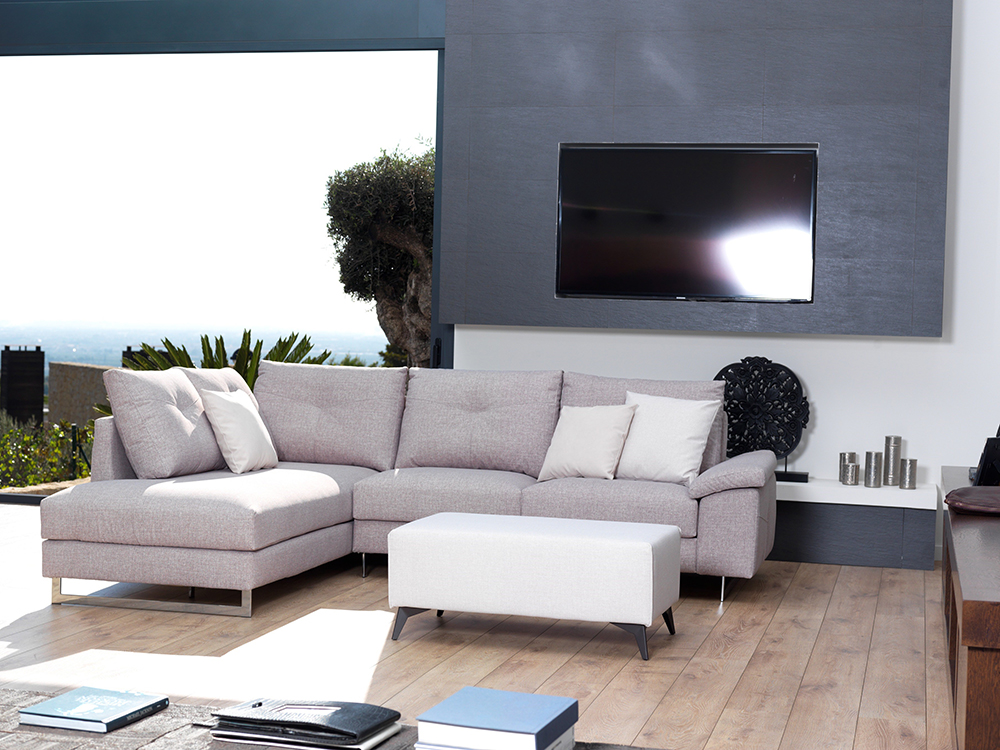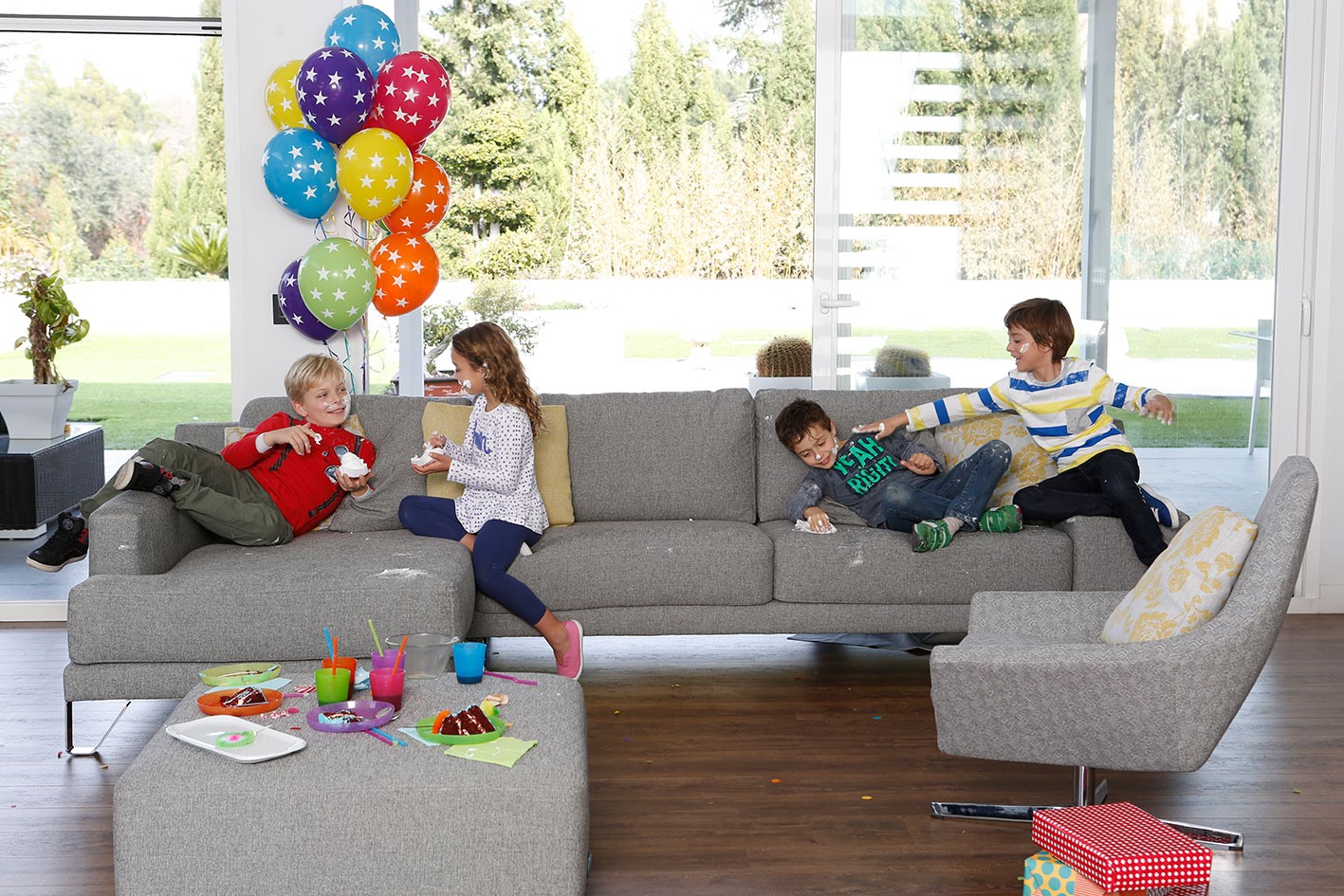Being able to start from scratch when you want to decorate a room is always an exciting prospect, at least in our heads. But once we get down to it, we realise that it's not so simple to convey all the ideas we have in our minds for that space bounded by its four solid walls.

Fantasy 336 Collection (Sofa and pouffe) · Capriccio 336 (armchair) · Fantasy 336 (cushions) in Fashion Book 18 from Visual Textures by Aquaclean.
So many decisions, so many doubts... What's going to work better amongst all those fabrics, colours, textures, finishes, shapes..., and not forgetting the budget!. While we might start out enthusiastically, sometimes we get overwhelmed.
So today, let's look at some practical tips so you can get organised and decide on the furniture you want for your room, and achieve the results you envisaged without freaking out. Here we go!
ZONIFY
First things first: don't start ordering furniture without gaining a clear overview of the structure of your room. Get pencil and paper and divide your space into zones: reading, TV, dining, games, work, storage, sofa, armchairs... We often tend to start the house from the roof down, as they say, without having a clear idea of what's below, and this makes choosing furniture and arrangements much tougher.

Minerva 14 Collection (sofa and pouffe) · Keops 13 (armchair) · Minerva 14 – Otaru 214 – Keops 346 (cushions) in Fashion Book 17 from Visual Textures by Aquaclean.
NUMBERS ARE KEY
When you're choosing your dining table, or sofas or coffee tables, think how many people will really be making use of these things on a regular basis. If your home is a weekend gathering place for friends or family, even if you live alone, you have to envisage a table and sofa that will make everyone comfortable, right? If, on the contrary, your parents only visit you twice a year, it's not worth getting a big table that you're normally not going to use the rest of the time. If that's the case, you're better off having more furniture for other needs, such as storage or a reading area, maybe with a nice wing chair thrown in.

Vera 02 Collection (armchair) in Book 15-16 Rustika by Aquaclean.
TV AREA
Although people are saying we watch less and less TV, nobody wants to say goodbye to this little area of the home. Whether it's TV or laptop, the sofa-TV-coffee-table combination is usually the main focus when it comes to structuring a living room.
So you have to pay special attention to the type of furniture you want to place in this area, bearing in mind, as we said, the kind of usage you foresee as regards number of people, usage time and the functionality you require. If you have small kids, for example, you'll need tables that are a little sturdier and less likely to break on impact, and maybe glass, which can break and shatter, would be a little too dangerous. And decide if you want to give more or less importance to comfort versus aesthetics. You should think through all this and analyse your needs before making your shopping list, so you can enjoy your living room as much as possible.
READING AREA
If you're a reader, you definitely need some space for a bookcase, a floor lamp, an armchair and an occasional table. Although you may like to read in bed or on the sofa, having a special little reading corner is also a delight. It's sure to be just the right place for those days when you want to disconnect from the outside world.
Try to locate this corner near a window so you can benefit as much as possible from the daylight, and ensure your reading chair is as comfortable as possible to help protect your back.

LIGHT
Another thing you need to consider when planning your furniture distribution is light. Try to make sure that your reading area or work zone are as close as possible to your lighting fixtures. And remember that your TV screen may reflect windows and lights, so bear this in mind when positioning the television area, depending on where daylight comes from and which fixtures could influence viewing. And try not to place furniture where it might block the light, so you can enjoy your daylight hours as much as possible.
AND FINALLY…
You're sure to want some personal touches in your living areas, whether they’re decorative objects, textiles or personal mementos. Remember not to saturate the room, or make it look overdone. Let your space flow naturally without too many interruptions.
Like we said, don't start with the roof. Start with your "foundations" to distribute space as appropriately as possible. Just focus on the actual use you'll give to each area, paying special attention to the sofa area, and just pick the furniture you really think you need. And let the light and the ambiance flow. That spells a sure-fire success!


